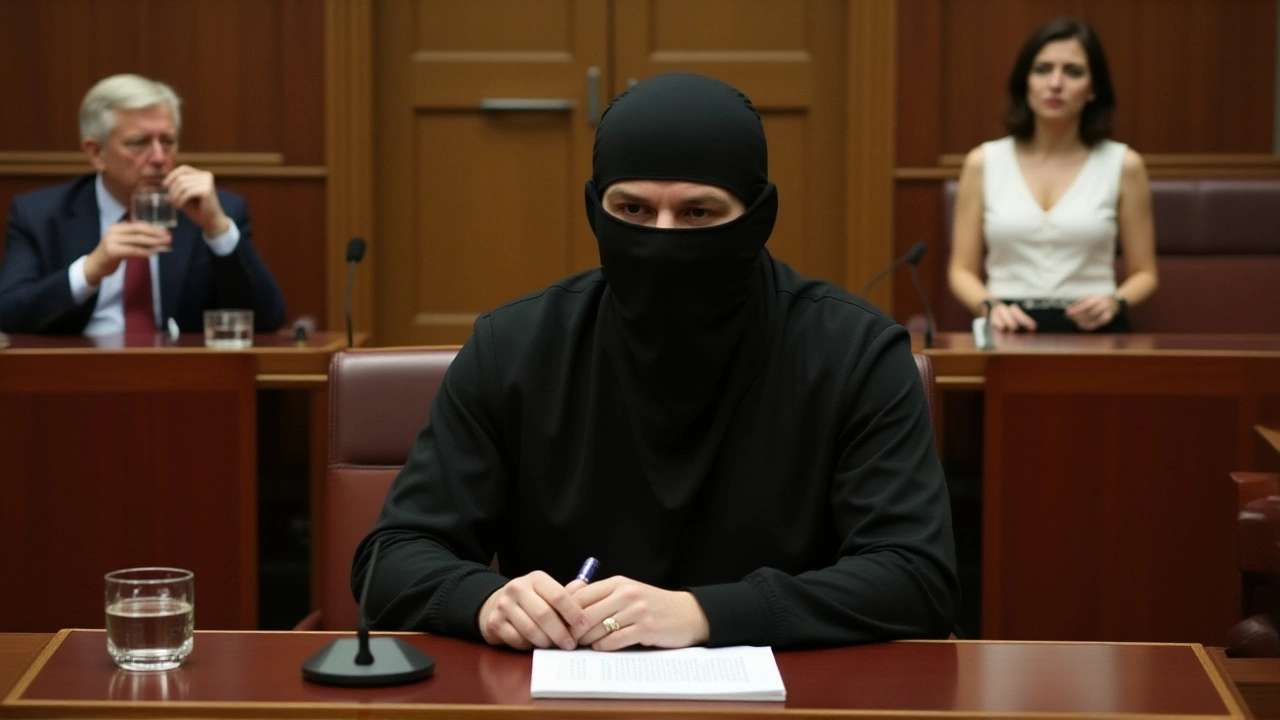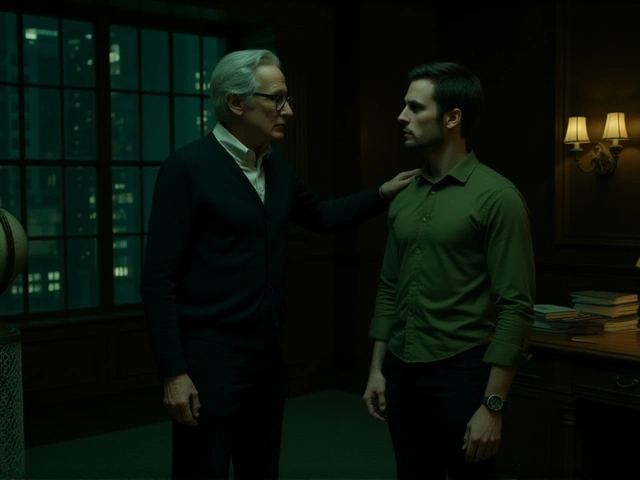Senator Hanson Wears Burqa in Parliament, Sparks Outcry as Faruqi Shouts 'Pull Up the Racist!'

On Monday, November 24, 2025, Australian Senate in Canberra was brought to a standstill when Pauline Lee Hanson, the 69-year-old leader of One Nation Party, entered the chamber wearing a full burqa — the very garment she has spent decades trying to outlaw. Moments earlier, she had been denied permission to introduce her bill banning full-face coverings in public spaces. The move wasn’t just a protest. It was a calculated act of defiance. And it worked — in the worst possible way. Mehreen Faruqi, a Muslim senator from New South Wales and the only woman of South Asian descent in the Senate, stood up and shouted, "PULL UP THE RACIST!" The words echoed through the hushed chamber. Silence followed. Then chaos.
A Stunt With a History
This wasn’t Hanson’s first time wearing a burqa inside Parliament. Back in August 2017, she did the same thing — walking in with her face completely covered, claiming she wanted to "experience" what Muslim women wear. Critics called it performative racism. Back then, she was reprimanded but not suspended. This time, the stakes were higher. The Senate had just passed a motion to strengthen the National Anti-Corruption Commission. The chamber was supposed to be debating amendments. Instead, it became a stage for a political theater that many saw as an assault on religious dignity.
The Reaction: From Outrage to Suspension
When Senate President Sue Lines ordered Hanson to remove the garment — citing standing order 192, which requires senators to have their faces visible during proceedings — Hanson refused. She argued that the rule was "unfair" and "discriminatory." That’s when Penny Wong, the 55-year-old Leader of the Government in the Senate and Australia’s Foreign Minister, rose to her feet. "I move that Senator Hanson be suspended from the Senate for the remainder of the day," she said, her voice calm but firm. The motion passed without opposition. The chamber was cleared for 45 minutes. No business was conducted. No votes. No debate. Just the sound of doors closing and the hum of security staff guiding Hanson out.
Why This Matters to 813,000 Australians
Australia’s Muslim population, estimated at 813,000 people according to the 2021 Census, didn’t need this reminder that their faith is still treated as a political football. The Australian National Imams Council released a statement calling the act "a deliberate provocation designed to marginalize Muslim Australians." Muslim community leaders in Bankstown, Melbourne’s Broadmeadows, and Sydney’s Auburn reported a spike in online harassment following the incident. "We’ve been told to assimilate, to blend in, to not make noise," said Amina Hassan, president of the New South Wales Muslim Women’s Network. "Then someone in Parliament puts on the very thing we’re told is dangerous — just to prove a point. It’s not just offensive. It’s dehumanizing."
Political Fallout and Calls for Accountability
Even Hanson’s allies in the Liberal-National Coalition distanced themselves. Deputy Prime Minister Barnaby Joyce called it "a distraction from real issues." Labor’s shadow minister for multicultural affairs, Tanya Plibersek, demanded a formal apology. "This isn’t free speech," she said. "It’s hate speech dressed up as protest." Crossbench senators from the Greens, Centre Alliance, and Teal independents all issued statements condemning the stunt. The only support came from far-right online forums and a handful of One Nation supporters who posted videos of Hanson with the hashtag #BurqaFreedom.

What Comes Next?
The Senate reconvenes on Wednesday, November 26, 2025. Standing order 192 allows for suspensions of up to 24 hours. But this time, there’s talk of more. Some senators are pushing for Hanson to be formally censured — a rare move that would go on her permanent record. Others are calling for a review of parliamentary dress codes to clarify whether religious attire is permitted. That’s a minefield. Australia has no official religion, but it also has no official policy on religious garments in Parliament. The legal gray area is exactly why Hanson chose this tactic. She knows the system is slow to respond. And she knows the media will amplify her message — whether it’s criticism or praise.
Why This Isn’t Just About Clothing
Hanson’s campaign against Islamic dress began in 1997, when she founded One Nation on a platform of anti-immigration and cultural preservation. Her 2016 speech, where she referenced violent attacks in suburbs like Bankstown and Bondi, was widely condemned — and later discredited by police data showing no such coordinated violence occurred. But the narrative stuck. Now, the burqa isn’t just clothing. It’s a symbol. To her supporters, it’s a symbol of oppression. To Muslim Australians, it’s a symbol of faith, identity, and resilience. When Hanson wears it, she doesn’t just break a rule. She weaponizes a sacred object. And that’s why Faruqi didn’t just speak out — she exploded. Because sometimes, silence is complicity. And this wasn’t just politics. It was personal.
Frequently Asked Questions
Why did Senator Hanson wear a burqa if she wants to ban it?
Hanson has used the burqa as a symbolic prop since 2017 to dramatize her opposition to full-face coverings. She claims she’s "experiencing" the garment to understand its impact — but critics say it’s a deliberate act of provocation designed to stoke fear and justify her policy agenda. It’s not about empathy; it’s about spectacle.
Is wearing a burqa actually illegal in the Australian Senate?
Yes. Standing order 192 requires senators to be identifiable during proceedings, which means faces must be visible. This rule applies to everyone — including those wearing religious head coverings like hijabs, which are permitted as long as the face is uncovered. The burqa, by design, covers the entire face, making it incompatible with parliamentary rules.
How has Australia’s Muslim community responded?
The response has been unified and forceful. Organizations like the Australian National Imams Council and the Australian Muslim Civil Rights Advocacy Network condemned the stunt as Islamophobic. Many Muslim Australians reported increased anxiety and harassment online. Community leaders are now calling for national dialogue, not just condemnation — and for political leaders to stop using religion as a wedge issue.
What disciplinary action could Hanson face?
Beyond today’s suspension, the Senate could formally censure her — a rare and stigmatizing move that appears on official records. Some senators are also pushing for a review of Senate conduct rules to prevent future stunts. If proven intentional, Hanson could face fines or restrictions on speaking rights. But given her party’s influence, outright expulsion is unlikely.
Does this incident affect Australia’s international reputation?
Yes. The incident drew immediate attention from human rights groups like Amnesty International and the UN Human Rights Council. Critics point to Australia’s self-image as a multicultural democracy. When a sitting senator uses religious attire as a political weapon, it undermines global perceptions of tolerance. Foreign diplomats have quietly expressed concern to Canberra.
What’s the real goal behind Hanson’s burqa stunt?
It’s not about legislation. It’s about visibility. Hanson’s polling numbers have dipped in recent years. By creating a viral moment, she reclaims media attention, energizes her base, and shifts the national conversation away from economic policy or climate action — issues she avoids. This isn’t policy-making. It’s performance. And it works — for her.
- November 24, 2025
- Cassius Windham
- 0 Comments
- Permalink




